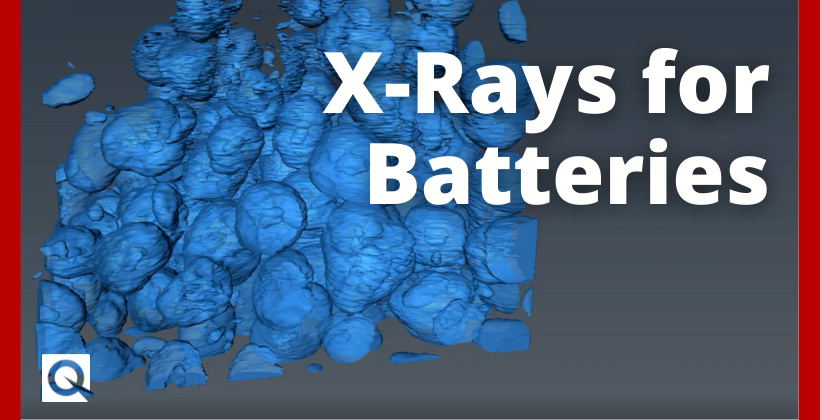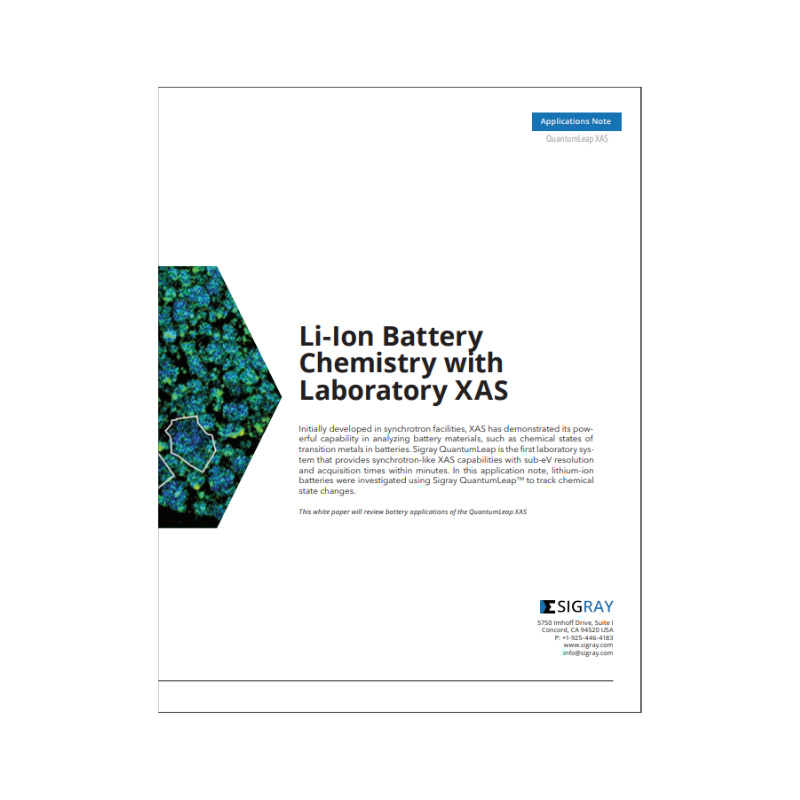
X-rays provide critical insight on failure mechanisms and lifetimes of energy materials because they can provide non-destructive measurements of structure, chemistry, and composition of batteries while they are running (in operando) or over time. Because of this, synchrotron approaches have been critical to the development of improvements to existing lithium ion batteries and for creating novel energy schemes such as lithium-sulphur and lithium-air batteries.
In Operando Pouch Cell Batteries
Pouch cell batteries are one of the most challenging samples to image at submicron resolution. They are simply too large for even the leading microCTs and XRMs to image at suitable acquisition rates at the high resolutions (0.5 µm) needed for quantifying microstructural changes.
High impact publication on in-operando pouch cell batteries
Sigray’s collaborators at Stanford University have received a high impact publication at PNAS entitled “In situ visualization of multicomponents coevolution in a battery pouch cell”. This breakthrough research was enabled by our patent-pending 3D x-ray CT system Apex XCT-150.

Battery Chemistry through XAS
XAS has become a gold standard approach for characterising structural and electronic information of electrodes, thereby providing an understanding of electrochemical mechanisms governing a given battery’s chemistry. Sigray’s QuantumLeap enables both ex-situ determination of electrocatalyst chemistry and the use of in-situ cells to study chemical changes in-operando.
Developments of novel battery materials is also accelerated by QuantumLeap, providing elemental chemical state measurements for new processes. An example has been the published information by customers at Shanghai Jiao Tong University (SJTU), who reported advances in the promising Ni-Zn batteries by carbon dot coating of the ZnO anode materials to extend material lifetime.
Read the paper published on Chemical Engineering J.

App Note Downloads…
3D Battery Structural Defects
3D X-ray Microscopy has become a gold standard for investigating battery failures and the structural defects that cause them. Shown to the right are various failures investigated with Sigray’s PrismaXRM in intact batteries. More information and figures can be seen in the article below, published on Cell Reports and using PrismaXRM for the x-ray microscopy images and AttoMap for the microXRF data.
Read the paper published on Cell Reports


3D Microstructural Evolution of Electrodes
The microstructure of electrodes are increasingly of interest because it is now recognised that damage incurred and agglomeration of particles from charging limits the long-term reliability and lifetime. TriLambdaXRM provides the resolution needed to see these changes – and because of the non-destructive nature of x-rays, can be used to observe such changes over time or in-operando.
3D Imaging of Intact Batteries and Batteries in-operando
Sigray’s PrismaXRM provides submicron high resolution even for large samples and samples placed within in situ cells. The flexibility of the PrismaXRM in switching between multiple fields of view allows hierarchical characterisation of batteries – from the full FOV to detailed region-of-interest imaging – without requiring de-packaging the battery. This allows non-destructive identification of problems such as small defects (cracks, particles) and shorts.
Read the paper published at Journal of Materials Chemistry A

Contamination in Battery Manufacturing and Metal Migration
Thermal runaway is one of the primary concerns in lithium ion batteries (LIBs) that is often caused by an internal short circuit. Such shorts can occur because of contaminants such as iron particles introduced during the manufacturing process. Sigray’s AttoMap microXRF provides high sensitivity at rapid speeds (down to 2ms/point) to quickly screen for contaminants.
For R&D researchers, the AttoMap’s high spatial resolution and sensitivity enable imaging of trace-level metal migration in electrodes between battery cycling. The system complements XRD and XAS systems by providing the distribution of elements of interest at microns-scale resolution.











